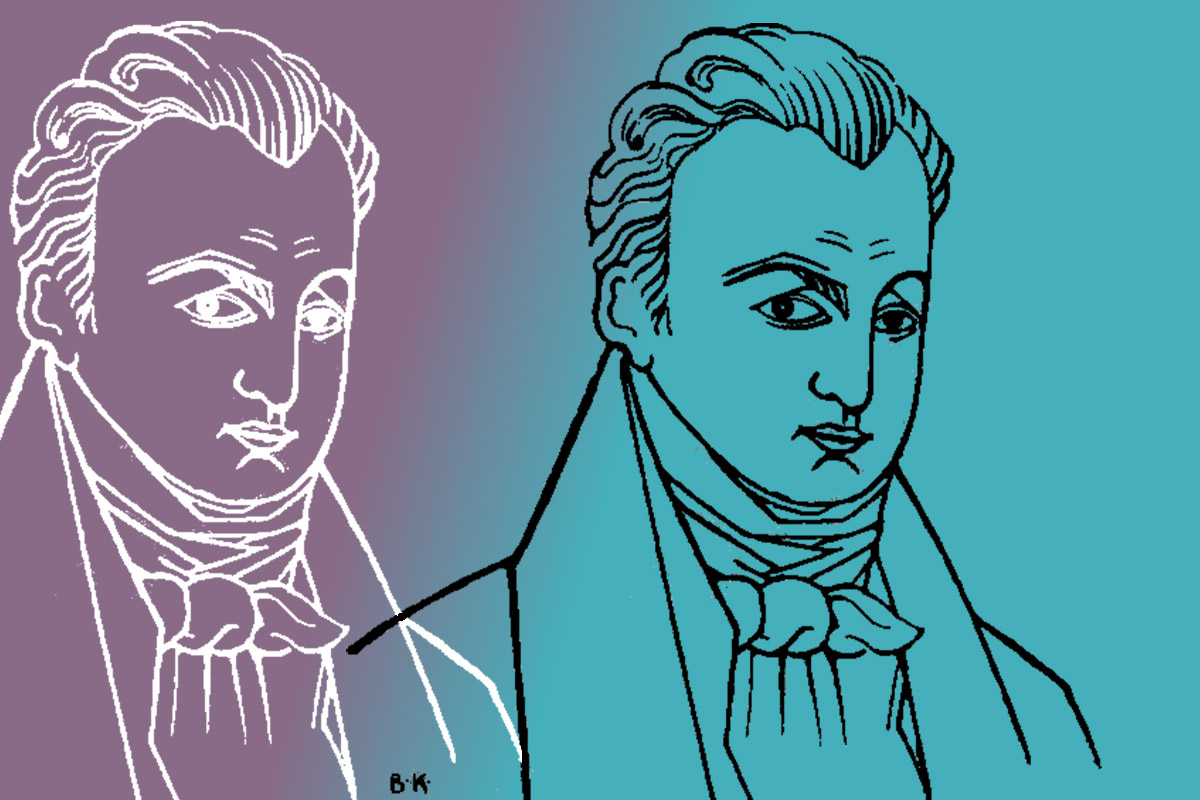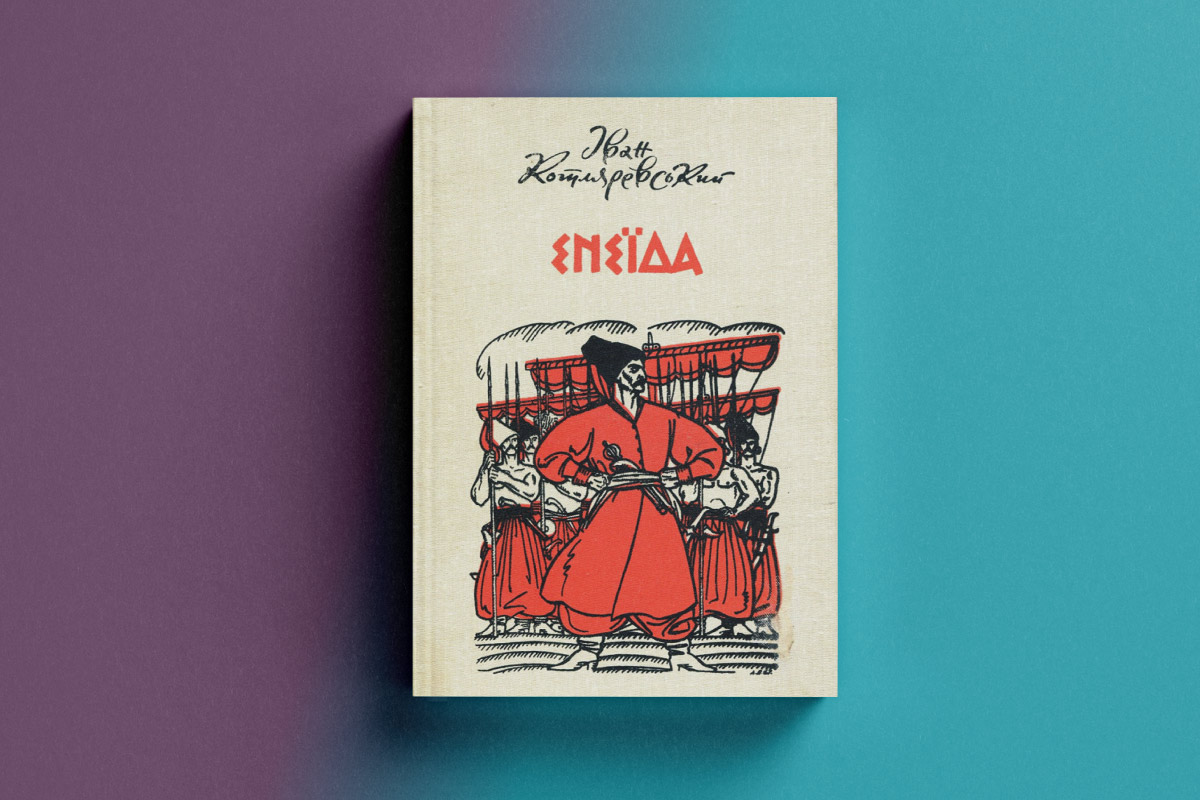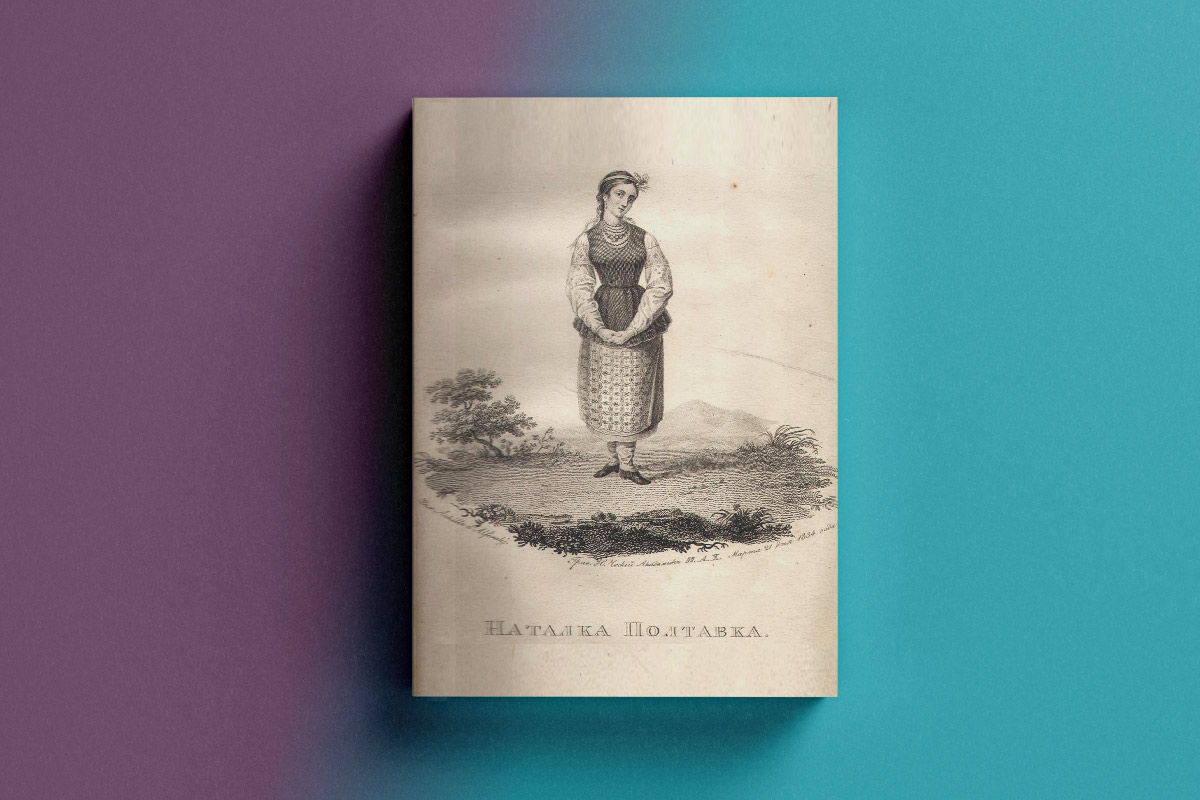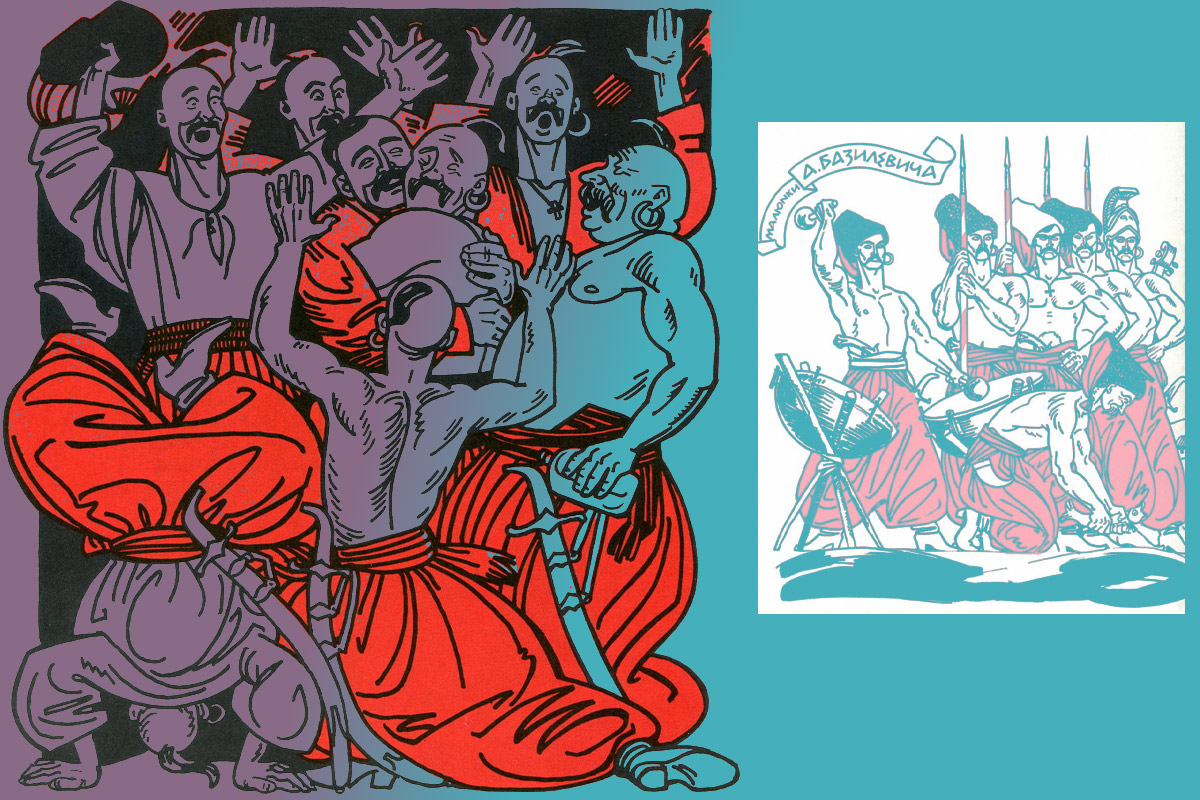* ESC - закрити вікно пошуку
Ivan Kotlyarevsky
Ivan Kotlyarevsky. The creator of the central image of Ukrainian culture
15.03.2023
Ivan Kotlyarevsky is one of the central authors of modern Ukrainian literature. The Eneida (The Aeneid), read at school and re-read in numerous art projects, is a programmatic text of our literature that we return again and again to.
Rostyslav Semkiv, professor at the National University of Kyiv-Mohyla Academy, tells us what Kotlyarevsky was like and why his most famous text is so important to us.
One of the most popular music compositions in Ukraine now is the mix of electronic duo PROBASS ∆ HARDI Cossacks are going. Ever since the 15th century the image of a free warrior of the Ukrainian steppe has been known. The Cossacks were the insubordinate settlers of the southeastern border of modern Ukraine, who lived from hunting or farming and defended their homes and the aforementioned southeastern borders from invaders who wanted to plunder them. We see that nothing has changed in 500 years — the invaders are here, again. And so are the Cossacks.
Folklore is where we first see the conceit of a Cossack. He is quite different there: grieves for his old-time glory and fallen comrades; he’s lonely, abandoned, and makes boasts of feats he accomplished, calls for a crusade, swears loyalty to the Christian faith. However, nowadays the image of a Cossack is that of a warrior who defends his native land without fear or doubt and, which is common, wins. A victorious Cossack can get out of a hundred troubles; he is the one who is capable of going against the enemy’s guns in his salwar and with a saber, who, when offered to surrender, writes a mocking letter to the Ottoman Sultan and tells a missile cruiser to f@ck off. This is how we see him. This is how Ivan Kotlyarevsky created him.

Success
What could a graduate of a theological seminary and an officer of a carabinier regiment do in his leisure time at the end of the 18th century? You’re not mistaken, of course. He’s writing poetry. At least that’s exactly what Kotlyarevsky did. His old-world house is still carefully preserved in Poltava, and one can see him sitting at a wide table or sinking into a soft couch, writing an endless series of lines of poem in his rounded handwriting with right slant.
While still being a student of the seminary, young Kotlyarevsky began writing and publishing The Fly, a kind of diary-journal he never parted with until the end of his life. (He wrote down many things, for example, there is a small diary about his participation in the Russo-Turkish war of late 1806). The Fly was supposed to be a biting one, in good traditions of older Ukrainian bursaks, whose traditions apparently seeped into the Poltava seminary too. It was from there that the future classicist Ivan Kotlyarevsky acquired a good knowledge of the Latin language and ancient texts, as well as an adventurous attitude to parody and distort ancient classics (that’s what they did in academies and seminaries, to tell the truth).
In short, he had a lot on his mind within a few years of graduation (he was born in 1769 and yes, graduated from the seminary in 1793), so the seminary exercises in burlesque poetry soon resulted in the idea of a whole parody poem. Work in the bureau, private lessons, and service as a junior officer in the army (because he was a hereditary nobleman) — everything that the young Kotlyarevsky did during the next few years after the seminary was not very interesting. To parody Virgil is something different though.
This Roman classic was a kind of torture for students of the time: his works taught in detail and learned by heart, an ideal object of students’ dislike (hatred?) throughout Europe. That’s why the trend to parody the Aeneid spread so easily — it literally became a blazing fashion. More than 20 parodies of the classic text appeared during the 17th and 18th centuries (of course, this wave of blasphemy was associated with the general liberalization of life on the continent). Scarron, Lalli, Blumauer, Osypov and others became famous for parodying Virgil’s Aeneid, but they are almost forgotten now. The reason is simple: Virgil is taught very little at schools nowadays.

Ivan Kotlyarevsky, Eneida
However, among all other parodies Kotlyarevsky’s work is unique. He did something that his predecessors and contemporaries failed to, and that is why monuments to him are erected and others are well-forgotten.
Cossacks
Kotlyarevsky’s status in Ukrainian literature is equal to the role of the great Dante in Italian culture. And not only because, just like the brilliant Italian, he begins to write in the language of the people, which will eventually acquire the status of a literary one. Like Dante, by his epic poem Kotlyarevsky creates a whole universe, putting into circulation a series of images that become crucial for the Ukrainian consciousness.
In his monograph The Western Canon, American professor Harold Bloom begins the discussion of the main books of the Western world starting with Dante. After the Divine Comedy we all see the entire structure of the otherworldly universe — from hell to heaven — following the imagination of the great Florentine. By the way, Dante also chooses Virgil as his guide. In a certain sense this poem is also a kind of dialog with previous traditions, both ancient and Christian. Of course, the author himself, despite the later influence of his work, is somewhat skeptical about it, which is why he calls it a “comedy”. And what do we see here? Dalliance turning serious? Ironic play acquires signs of insight? The same thing is happening to Kotlyarevsky.
Manners and customs of gods and heroes in epic poem by Kotlyarevsky reflects way of life of the gentry and bourgeoisie of the time, sinners in hell offer a wide range of social blemishes, and Aeneas himself and his army become iconic for our vision of the Cossacks.
At the very beginning Kotlyarevsky does what everyone who parody Virgil’s poem does: he retells the plot of an ancient poem in a simple, even crass way. It’s called burlesque: gods and heroes start swearing, having sex, drinking alcohol, well, they drink almost all the time. The high becomes low, and it turns out funny. Battles, death and hell appear just as simple-mindedly funny… This is not the originality of the Ukrainian Eneida though.
Deliberately or not, Kotlyarevsky initially lays a significant historical parallel in the basis of his remake. Other authors also manage to modernize ancient images, which makes them look like fellow citizens of this or that author, whom they humiliate and ridicule. To make one laugh and ridicule is the ultimate goal of Kotliarevsky’s parodies. On the other hand laughter has a somewhat different function. It is used as a disguise.

Historical parallels emerge in the Ukrainian Aeneid from the first line, where Aeneas is called a Cossack. All the Trojans immediately appear as a Cossack army, the destruction of Troy is seen as the destruction of the Zaporizhian Sich (Zaporizhian Host), a Cossack fortress beyond the rapids of the Dnipro River. The Sich was destroyed by Catherine the Great in 1775 in order to strengthen Russian imperial power. Of course, what monarch would want to have an uncontrolled quasi-state entity on his territory, whose inhabitants are defending the southern borders, but who can also turn their weapons against the monarchy. All the more this happened all the time in the Polish-Lithuanian Commonwealth, which controlled Ukrainian lands until the mid 17th century.
Thus, the Sich was destroyed when Kotliarevsky was still a child, he was six years old at that time. Most Cossacks were turned into regular units of the Russian imperial army, and references to anything independent were banned. Even now, people in the occupied territories are executed for such views.
And what about Kotlyarevsky? The comic setting of the parody poem gives him the opportunity to tell a serious story: Troy (Sich) has been destroyed, the Trojans (Cossacks) are fleeing, but in the future, after enduring many trials and battles, they will build a new “kingdom” — Rome (Ukraine). It was only a parody on the outside with a political pamphlet hiding inside.
Officer
Kotlyarevsky served in the imperial army, but he was lucky. After studying at the seminary and working as a teacher, he joined the army just in the year Catherine the Great, for whom expansion to the south was a kind of idée fixe, died. Ivan Kotlyarevsky doesn’t witness the bloody campaigns of Marshall Suvorov, whose troops in 1790, for example, massacred the entire civilian population in Izmail. In some 16 years, during the next Russian-Turkish war, Kotlyarevsky would find himself at this city, but the siege would appear to have much calmer consequences, as in general, things would be mainly resolved through diplomacy in that war.
One should understand that those wars were led between empires: The Ottoman Empire from the south and the Russian Empire from the north were trying to grab certain territories from each other. Thus, after the Suvorov’s massacre, the war ended with the transfer of Kuban and the Crimea to the Russians; after the war in which Kotlyarevsky took part, the Ottomans gave away Bessarabia, and so on. That is, in all cases it was a war of aggression, no matter who started it. And, accordingly, if another Pasha was considering whether to surrender a city without a fight or not, he was not concerned with the defense of its inhabitants as these were generally strangers for whom he himself appeared as an occupier. Kotlyarevsky witnessed a more humane war, as it was at the time, in which empires did not engage in significant fights, and thus the local population did not become hostages to great-power ambitions. In the meantime Kotlyarevskyi even played a role in a diplomatic mission during that war, making sure the locals would not join the war on the side of the Ottomans. Thus, for the population of Bessarabia, the war ended with a simple change of flags on the fortresses, and Ivan Kotlyarevsky received the Imperial Order of Saint Anna and managed to retire early with the rank of staff captain.
The end of his military career coincided with publication of the two editions of the Aeneid, authorized by the author. He apparently began writing the poem during his senior year at the seminary, because by 1798, when it was printed without permission in St. Petersburg, the first three parts already were circulating in lists. After his retirement, Kotlyarevsky took up the work more thoroughly, authorizing the 1808 edition and completing Part IV, including the poem, which was published in 1809.
His work upon the next parts of the poem was interrupted by the war with Napoleon, when Kotlyarevsky was mobilized for military service again. However, he does not take part in the campaign in the north: he was instructed to form an independent Cossack regiment, which he successfully accomplishes, but the war had already ended. Kotlyarevskyi was promoted to the next military rank, but he never left Poltava. Still, he has enough temporal affairs.
Fame
For more than two last decades of his life, Ivan Kotlyarevskyi has been working for the benefit of his hometown. Since 1810 he has been running an educational institution for the children of poor noblemen, and since 1816, during five years, he has been creating and directing a theater in Poltava. This position was important for him from an ideological point of view, too: the fact is that at that time in the empire plays in the “Little Russian dialect” were almost exclusively entertaining vaudevilles. At that time people did not believe that the spoken language of peasants was appropriate to reflect real feelings and tragic situations. In principle, the same distrust is shared with the “Great Russian language”, because the true elite language is French. It was extremely important for Kotlyarevsky to overcome this prejudice, and in 1819 he wrote his first play in colloquial Ukrainian, Natalka Poltavka (Natalka from Poltava). We won’t go into details and arguments, just believe me, for the early 19th century, this is a rather feminist play. The image of the brave girl Natalka, who is able to decide her own destiny, is another famous creation by Kotlyarevsky. He managed to do so much — designed an epic poem in the new Ukrainian language, and a theater.

Natalka Poltavka
Kotlyarevsky’s fame goes far beyond Poltava. The Aeneid is actively read, and Natalka Poltavka will appear in the repertoire of all subsequent Ukrainian theaters as soon as they are allowed to do so. Over the next few decades the burlesque style of Kotlyarevsky’s plays became fashionable, his Aeneid was imitated, and this phenomenon was called Kotlyarevshchyna. Meanwhile, the author lived out his life in Poltava, serving as a “trustee of godly institutions” almost until the end of his life. At the same time, he plays a role in local secret societies, which is not so safe after the Decembrist revolt in St. Petersburg in 1825 and, especially, the Polish anti-imperial uprising of 1830.
Four years after the author’s death, in 1842, the complete Aeneid was published in all six parts. In the first edition of his Kobzar in 1840, Taras Shevchenko, an upfront Ukrainian romantic, dedicated a separate poem to Kotlyarevsky’s memory, in which he spoke grandly about him:
You will hold sway above us, Sire,
As long as men shall live;
As long as sunlight floods the sky,
Your name’s superlative!
(“In eternal memory of Kotliarevsky”, translated by С.H. Andrusyshen and Watson Kirkconnell)
Aeneid, just like Kobzar, became the leading symbols of the forbidden Ukrainian culture for a long time and, thanks to their fame, survived the decline and collapse of the Russian Empire. On the 100th anniversary of the first publication of Aeneid — in 1898 — the Ukrainian cultural community raised funds to erect the first monument to Ivan Kotlyarevsky. However, until 1903 the imperial authorities did not allow this to happen, but almost all the prominent authors who wrote in Ukrainian at the time came to Poltava. Thus, the writer’s fame began to grow into something more.
Cult
When I had just arrived in Kyiv in the second half of the 1990s and was slowly starting to write, someone convinced me that no one could become a good author until they visited the Aeneid Cafe in the basement of the Writers’ Union, which was actually a smoky writers’ pub. The entire room, with low ceiling, heavy oak benches and tables, was stylized as “hell” by Kotlyarevsky. The walls were covered with large-scale drawings — copies of a series of illustrations to the poem personally made by the author Anatolii Bazylevych.

The 1968 edition of Aeneid, for which the artist had been preparing images since the mid-1950s, almost instantly became a rare object. Bazylevych painted boldly: first of all, he worked out the Trojan Cossacks themselves in a juicy way, which finally consolidated the image of the Cossack in the national visual culture. Secondly, the illustrations contained quite a bit of nudity, which brought back the burlesque obscenity inherent in the poem from the beginning. Unprecedentedly, permission to print so many nudes was given in the puritanical USSR, and most of the nudes were depicted in hell, which was somehow passed off as propaganda for atheism. (Do you understand now what the walls of the Aeneid Cafe looked like, right?) And finally, Bazylewicz was not afraid of bright colors, and the illustrations visually enhanced the gambling and challenging spirit of the poem itself. The 1968 edition was not just a luxurious book — it was a dissident protest against the tradition and the entire system of that time.
Aeneid returned again in 1991, at the very beginning of the period of independence, when an animated film of the same name was released by director Volodymyr Dakhno. The image in it acquires a grotesque and even cheerful caricature, which, again, effectively conveys the burlesque spirit of the poem. Aeneid caused laughter among its first readers — in a century or two this effect softened, but the baton was handed to visuals and watching Dakhno’s cartoon or looking at Bazylevych’s illustrations people laugh now…
When I see a young man wearing a T-shirt with a portrait of Kotlyarevsky at it and the inscription “Thank you, grandfather, for the Aeneid”, I realize how few, oh so few, writers from the 18th century are still that much important. Ivan Kotlyarevsky remains the creator of almost immortal Ukrainian images that are still with us, and continue to inspire us to live, fight, and win.
Read also: Ivan Bahrianyi: perfect adventure novels, perfect adventure life
This publication is sponsored by the Chytomo’s Patreon community
що більше читаєш – то ширші можливості



